Chicago in October . . . Diner, Art Institute and Museum of Contemporary Art
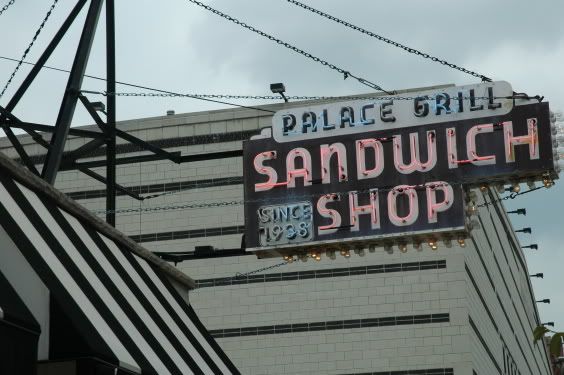

Within these clean white walls, one can sit at a classic lunch counter and chat with the waitress whose son works there as well. She calls you 'hon and means it and also offers timely and (most importantly) friendly and comforting service.
Later in the afternoon, I visited the Art Institute of Chicago. I initially chose to visit because there were two photography exhibits that interested me. Neither were easily photographed, but I took many other pictures.
First I visited the garden on the southern side of the Art Institute. It is one of my favorite places to spend time in the city and I had never before seen it with fall colors like this:
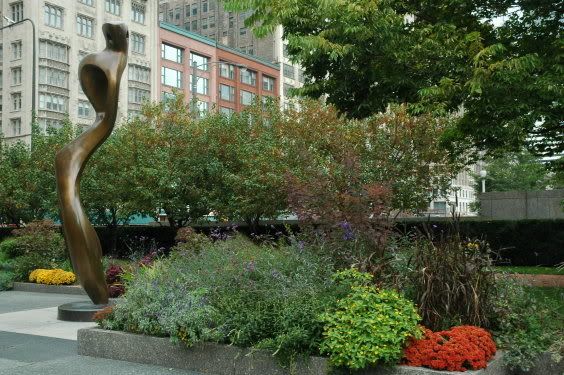
As you can see, I enjoy photographing this curvy sculpture in various poses:
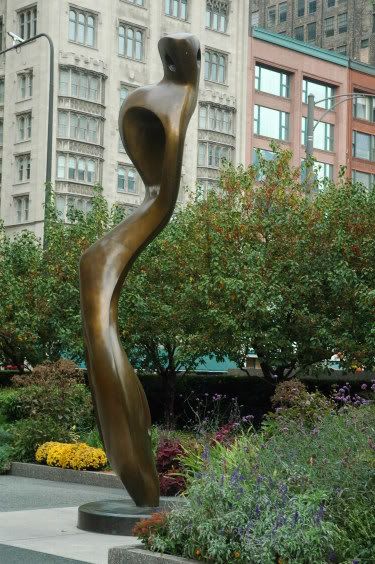

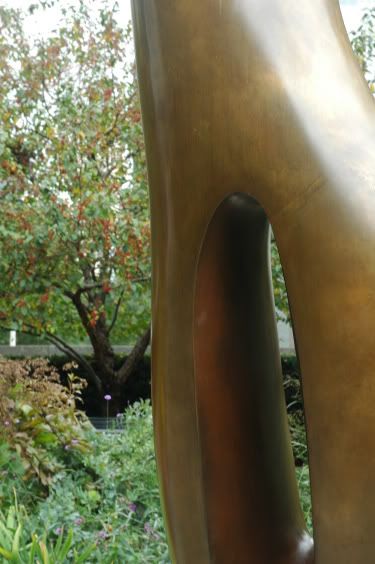
Seeing (or rather feeling) that raindrops were imminent, I turned the corner and made my way to the museum. There I found this lion, a Sox fan apparently, guarding the entrance:
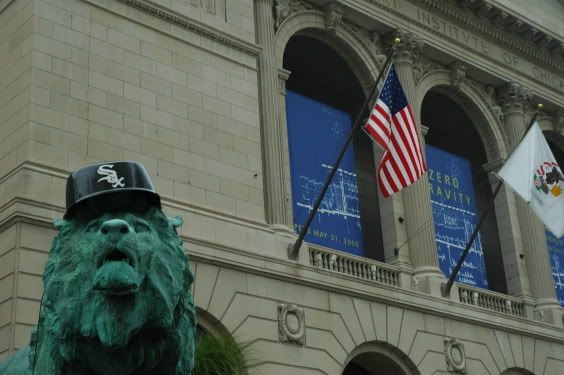
Inside I headed straight for the "Paris: Photographs From A Time That Was" exhibit that ends next week. I loved the black and white photos by the likes of Eugene Atget, Brassaic, Henri Cartier-Bresson, Robert Doisneau, Andre Kertasz, Jacques Henri Lartigue. How lovely!
In the next room I found the other photography exhibit I was there to see, called, "A View with a Room: Abelardo Morell's Camera Obscura Photographs." Here is the Art Institute's explanation of how these wonderful photographs were created:
I highly recommend that you click on this link so that you, too, can share in the wonder of his creativity and technical skill. If you are too lazy for that (shame on you!), here is one of my favorites:The principle of the camera obscura (Latin for dark room) has been known since antiquity: that light passing through a small aperture in a darkened chamber will project, upside-down, the image of the outside world. The basis for all photography, the camera obscura can be a darkened room or a small, hand-held box camera. The simplicity of this natural phenomenon makes it no less wondrous. As Leonardo da Vinci wrote of it, "Who would believe that so small a space could contain the image of all the universe? O mighty process!"
Since 1991, Abelardo Morell has been photographing spaces transformed by this process. He converts a common room into a camera by darkening the windows and placing a small hole in one of them; the scene outside of the room's windows is then projected across the interior. The resulting juxtapositions can be as strange as they are delightful: upside-down houses hover above a toy-strewn floor; the Empire State Building reclines languidly across a bedspread in midtown Manhattan; the buildings of Havana, Cuba, Morell's birthplace, dance across family pictures hanging on the wall. A View with a Room brings together 25 of the best images from MorellÂs camera obscura series for an experience that is magical and revelatory.
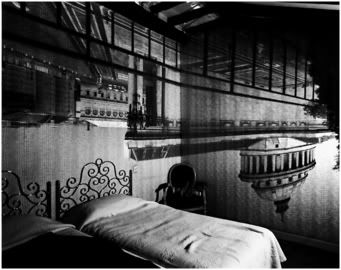
In the room next to these photography exhibits was an interesting display of architectural renderings of "sacred spaces." This was one of my favorite finds there:
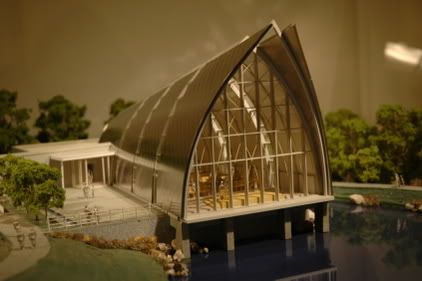
I then rested for a bit on a bench near the museum's entrance. While sitting there, I took this photograph of the skylight:
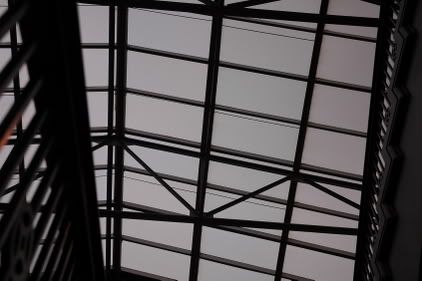
I also listened to a father and son exult over how much ground they had covered in a short time, as compared to their slower (female) family members who were ooh-ing and ah-ing over every piece of Impressionist art. The father jokingly bragged, after I chimed in, that he had covered the entire Louvre in a mere four hours.
I tried to visit my old friend the Chagall window, but sadly, it was temporarily removed for safety purposes during the impending museum addition project. So I climbed the stairs to the painting galleries and photographed this sculpture of a man fighting a lion . . . I appreciated the feeling of courage that it bolstered in me:
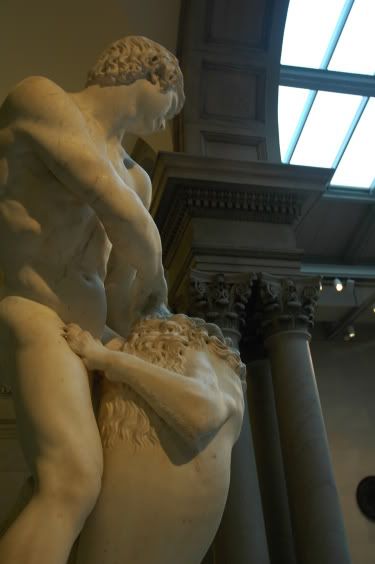
I then realized it is much more fun and interesting to snap pictures of pieces of art than to try to capture the entire work of art in a mere photo. Here are my efforts in that regard:
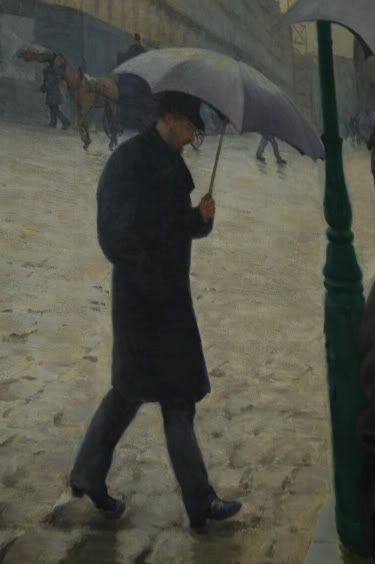

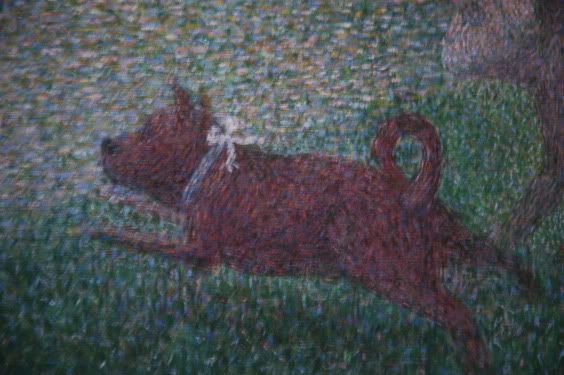
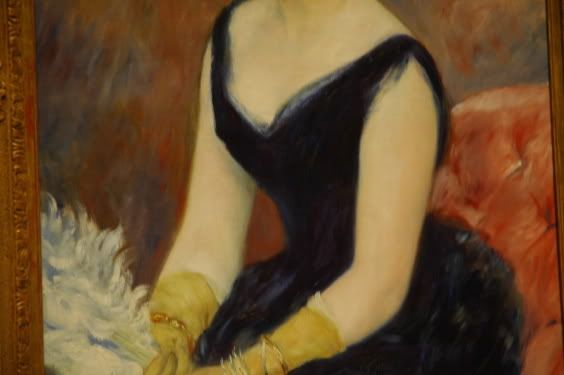

I have seen these paintings so many times that visiting them feels like time spent with old friends. I also made some new friends, first in the ancient pottery section (at least that's what I call it!):



I adore the clean lines of classic modern furniture:

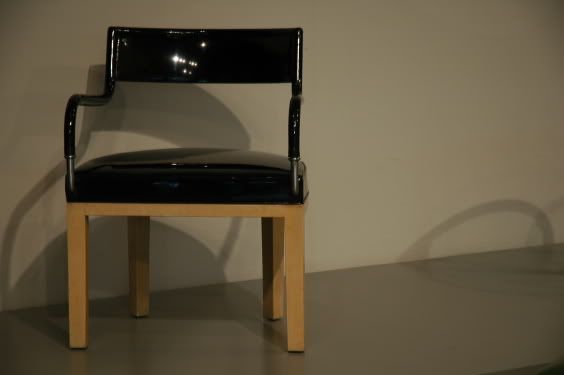
And the funkier lines of this other furniture:

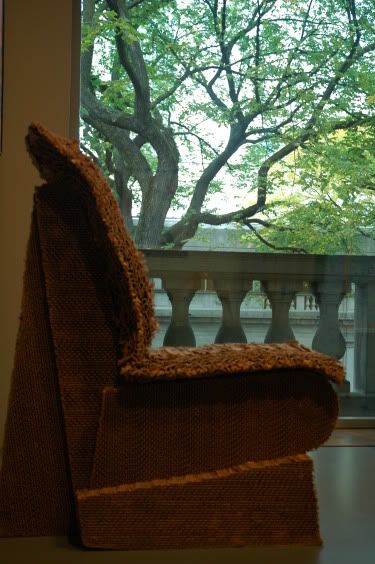
Can you guess what this is?
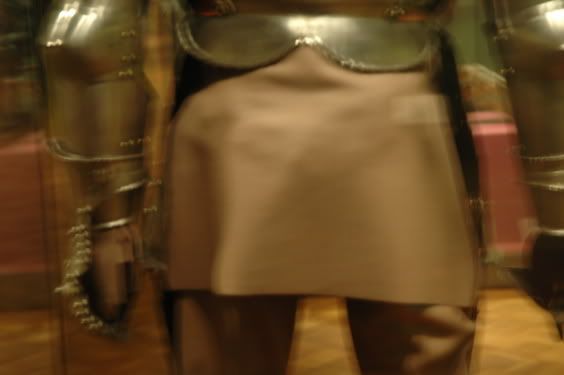
I headed out, first admiring this collision of old and new:
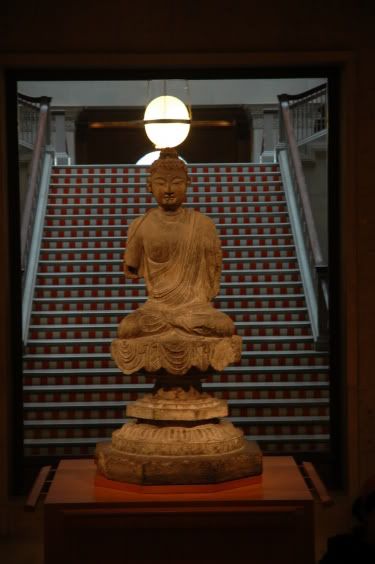
and headed off in the direction of the lion:
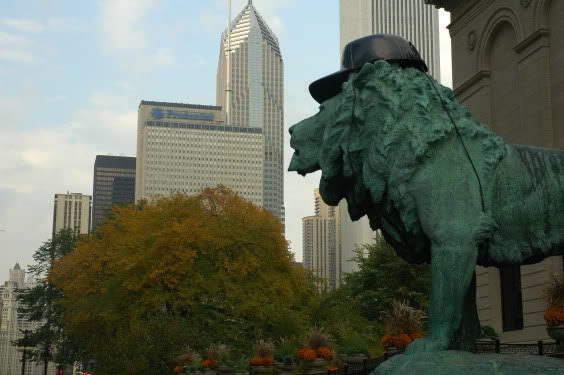
On Sunday, not quite being full of art yet, I made my first-ever visit to the Museum of Contemporary Art. The stroll up Michigan Avenue was wonderful, despite the threat of rain and the chill of the air. There were people everywhere, but not too much so, and there was the promise of an entire Sunday of doing exactly what I wished, followed by Game 2 of a World Series that the White Sox led 1-0.
So I found myself walking in the spaces between rain drops, then climbing the grand staircase of the Museum of Contemporary Art. Before entering the museum, I turned and took in the cool, fresh air while looking out over the park that faces the museum. Over its trees you can see the old Watertower that looks over Michigan Avenue. Glorious!
Inside there was a major exhibit involving Dan Flavin's work, specifically, his light installations. I thought the term sounded pretentious and silly (see Carrie's beau Alexsandr Petrovsky from "Sex and the City" for this concept). That is, until I experienced the exhibit. One of the first pieces that really stirred me was this one:
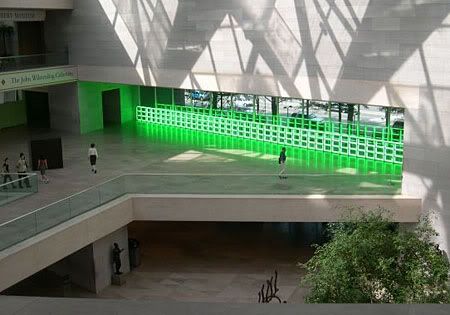
(This was taken at a different museum, and not by me, but photos of exhibits are not allowed in the MCA). Anyway, it is hard to explain the attraction of this exhibit, which really consists of nothing but fluorescent tubes of light in various colors. After the green fence piece, I saw a few others that I loved; they each evoked a surprising level of emotion. Anyway, I will stop trying to explain and merely state that I liked it so much that I want very much to visit the Dan Flavin Art Institute in Bridgehampton.
Because I could not photograph the exhibits, I turned to the architecture found in places other than the galleries, which provided nice photographic material, as you will see. The stairs, lit from the side, with stair treads beautifully backlit by the faint fluorescent light of the Flavin exhibit:

Marching lights:

A beautiful upward view:

And the fish pond one passes on the way out (notice how the shape mirrors that of the sky light):
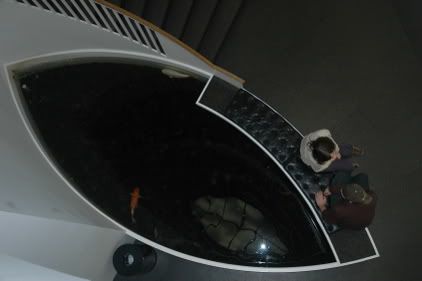
What a wonderful weekend of museum visiting! Please see my other blog for the story of my baseball watching! ;P


0 Comments:
Post a Comment
<< Home